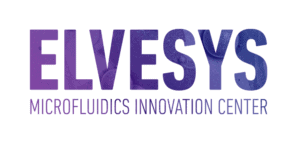Blood-brain barrier on-a-chip microfluidic platform
Mimic in vivo models with dynamic culture and applied shear stress
Easy unidirectional recirculation flow using microfluidic valves
Beginner friendly microfluidic instrument pack with detailed user guides
Why use microfluidics for blood-brain barrier on-a-chip model?
Improve interactions analysis between blood and brain extracellular fluid using microfluidics. Perform dynamic perfusion experiments to better mimic in vivo conditions and obtain physiologically accurate results with this all-included user-friendly, customizable and automatable blood-brain barrier on-a-chip instruments pack. The pack can be easily combined with microscopy for real-time readouts.
The advantages and drawbacks of in vivo models and different in vitro strategies are summarized in Table 1, adapted from Chin et al. [1], including decreased cost, better physiological accuracy thanks to shear stress and controlled environment.
Blood-brain barrier on-a-chip model using microfluidics is the most promising strategy for BBB analysis, drug screening and breakthrough personalized medicine applications. Another critical feature compatible with using a microfluidic platform is to couple and synchronize imaging systems with the model to perform real-time monitoring of the cultures [2].
Table 1. Comparison of the different models used in BBB research.
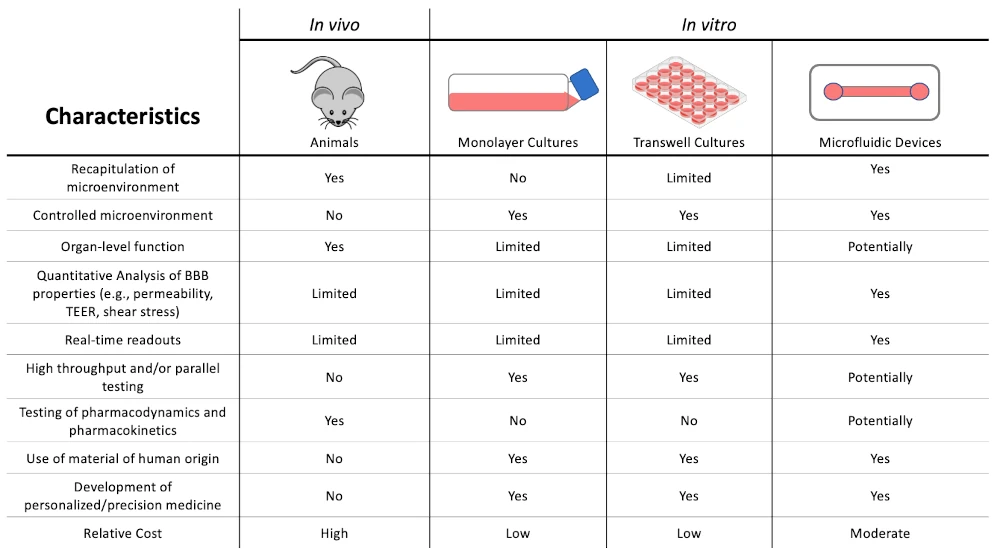
The blood-brain barrier on-a-chip microfluidic platform is flexible and can be combined with several microfluidic functions like automatized sequential injections, chip parallelization or droplet generation. Use the fluidic 480 microfluidic chip from microfluidic ChipShop or any custom chip depending on the desired model characteristics.
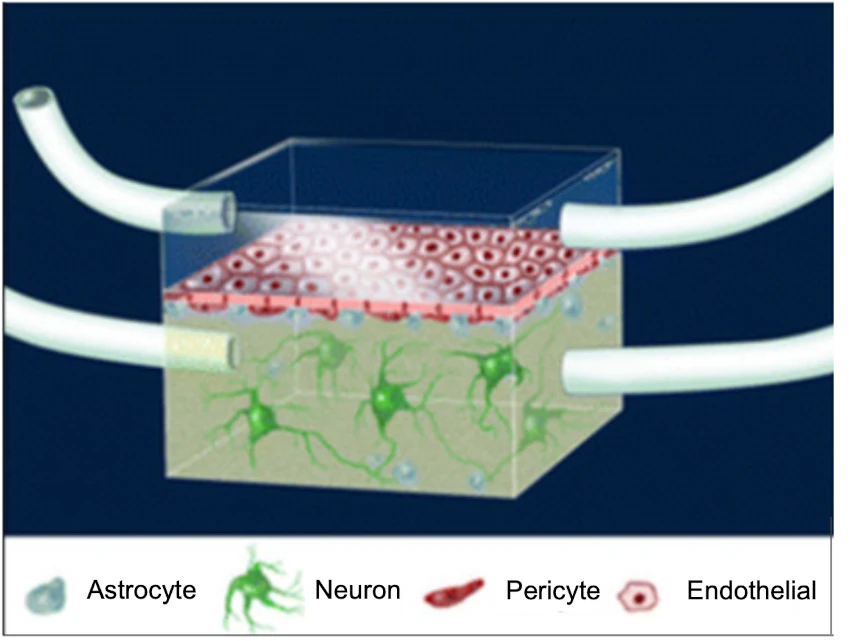
References
- Chin E, Goh E. Blood-brain barrier on a chip. Methods Cell Biol. 2018; 146:159-182.
- Bhatia, S., Ingber, D. Microfluidic organs-on-chips. Nat Biotechnol 32, 760–772 (2014).
- Brown, Jacquelyn A., et al. “Recreating blood-brain barrier physiology and structure on chip: A novel neurovascular microfluidic bioreactor.” Biomicrofluidics 9.5 (2015).
- Chen, X.; Liu, C.; Muok, L.; Zeng, C.; Li, Y. Dynamic 3D On-Chip BBB Model Design, Development, and Applications in Neurological Diseases. Cells 2021, 10, 3183.
Blood-brain barrier on-a-chip instrument pack
The pack contains the highly precise OB1 flow controller (Elveflow) and, if needed, a microfluidic membrane chip composed of a vascular channel and a neural channel separated by a membrane.
The long-term dynamic coculture of endothelial cells and neural cells (astrocytes, pericytes, neurons) allows you to study blood-brain barrier (or BBB) functions and perform drug screening to develop new therapeutics. We provide continuous and full customer support to help you choose the suitable instruments and fulfill your experimental goals.
Developing a blood-brain barrier model that mimics in vivo behavior using static monolayer cultures is difficult because of poor recapitulation of the microenvironment. Using the blood-brain barrier on-a-chip microfluidic pack for dynamic culture allows better reproduction of the microenvironment and the control of shear stress.
This easy-to-use blood-brain barrier on-a-chip pack contains several critical functions, including a precise and perfectly controlled flow rate, recirculation of different solutions, and software for flexible sequence scheduling and automatization. These functions lead to cost reductions and improve precision and reproducibility.
The perfused medium unidirectionally recirculates through the blood-brain barrier on-a-chip thanks to several valves piloted by customizable automated sequences.
The blood-brain barrier model is inside a microfluidic chip, possibly designed with different layouts. This chip typically comprises two channels, one vascular channel and one neural channel, separated by a porous membrane.
Chips can be homemade from PDMS with different geometries to fit specific needs. Alternatively, microfluidic ChipShop can provide commercial membrane chips, like the fluidic 480, which is optically transparent and compatible with cell culture. These chips can be included in this pack with specific channel height, width, length, and material.
Instrument packs are the best way to introduce microfluidics to your experiment for the first time. They are carefully designed to avoid compatibility issues between microfluidic parts, are straightforward to assemble, and are piloted by a single software.
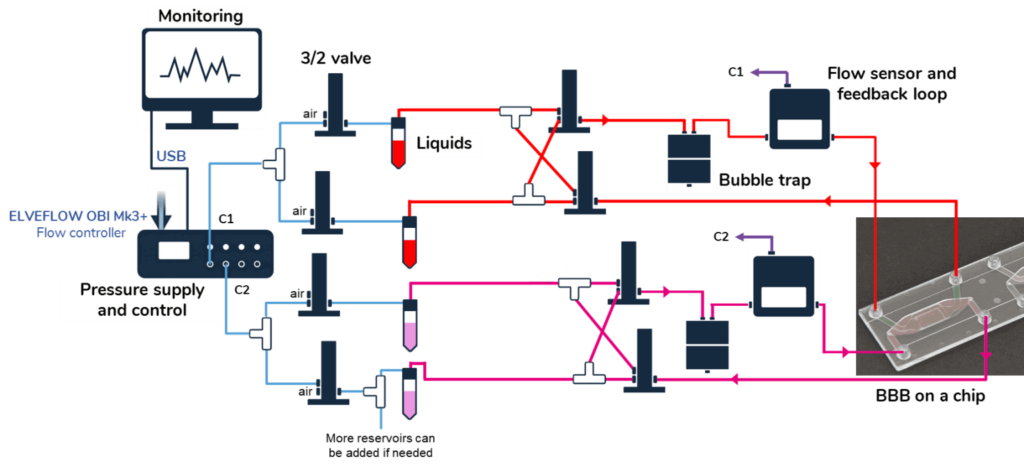
A typical BBB on-a-chip pack contains:
- OB1 MK4 flow controller (Elveflow)
- Flow sensors (MFS or BFS, Elveflow)
- Bubble traps
- Fittings, tubings & luers
- Reservoirs
- Microfluidic chip for blood-brain barrier on a chip model
- Elveflow software
- User guides for instruments
Blood-brain barrier on-a-chip principle
The blood-brain barrier or BBB is a diffusion barrier, formed by endothelial cells, astrocytes and pericytes, which prevent most substances in the blood from entering the brain and plays a critical role in the maintenance of brain homeostasis [1, 2].
Research on BBB is difficult and studies that are based on cell culture or animal models are not able to be replicated with sufficient accuracy. However, obtaining a better model of the BBB is extremely important as it is related to a number of diseases including Alzheimer’s disease or epilepsy that are big health and financial burdens worldwide [3, 4].
To more accurately model the BBB, the endothelial cells have to experience shear stress from blood circulation, thus needing a different setup than static cell culture [5]. Microfluidics is the only available technology to properly mimic the BBB in vitro with its multi-cellular and complex structure in dynamic conditions.
The use of in vivo animal models incorporate full cell complexity but they possess critical drawbacks such as physiological differences with humans, costs and ethical concerns. 80% of drugs that were successfully tested on animals failed to pass human clinicals trials [6].
Therefore, different microfluidic model strategies have been developed to mimic the BBB on-a-chip using different microfluidic chip layouts with or without a membrane [7-10].
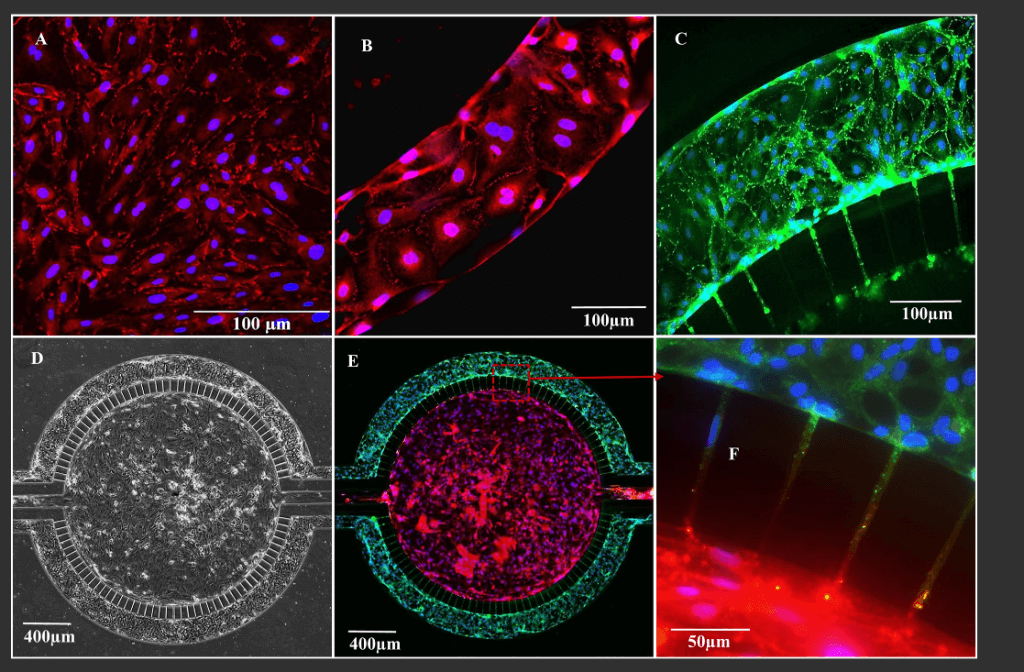
References
- Praveen Ballabh; Alex Braun; Maiken Nedergaard (2004). The blood–brain barrier: an overview: Structure, regulation, and clinical implications., 16(1), 0–13.
- Chin E, Goh E. Blood-brain barrier on a chip. Methods Cell Biol. 2018;146:159-182. doi: 10.1016/bs.mcb.2018.06.003. Epub 2018 Jul 13. PMID: 30037460.
- Xiuli, G., Meiyu, G. & Guanhua, D. Glucose Transporter 1, Distribution in the Brain and in Neural Disorders: Its Relationship With Transport of Neuroactive Drugs Through the Blood-Brain Barrier. Biochem Genet 43, 175–187 (2005).
- Hsu D, Marshall GA. Primary and Secondary Prevention Trials in Alzheimer Disease: Looking Back, Moving Forward. Curr Alzheimer Res. 2017;14(4):426-440. doi:10.2174/1567205013666160930112125
- Cucullo, L., Hossain, M., Puvenna, V. et al. The role of shear stress in Blood-Brain Barrier endothelial physiology. BMC Neurosci 12, 40 (2011). https://doi.org/10.1186/1471-2202-12-40
- Perrin, S. Preclinical research: Make mouse studies work. Nature 507, 423–425 (2014).
- Deosarkar, Sudhir P., et al. “A novel dynamic neonatal blood-brain barrier on a chip.” PloS one 10.11 (2015): e0142725.
- Prabhakarpandian, Balabhaskar, et al. “SyM-BBB: a microfluidic blood brain barrier model.” Lab on a Chip 13.6 (2013): 1093-1101.
- Achyuta, Anil Kumar H., et al. “A modular approach to create a neurovascular unit-on-a-chip.” Lab on a Chip 13.4 (2013): 542-553.
- Griep, L.M., Wolbers, F., de Wagenaar, B. et al. BBB ON CHIP: microfluidic platform to mechanically and biochemically modulate blood-brain barrier function. Biomed Microdevices 15, 145–150 (2013).
Specifications
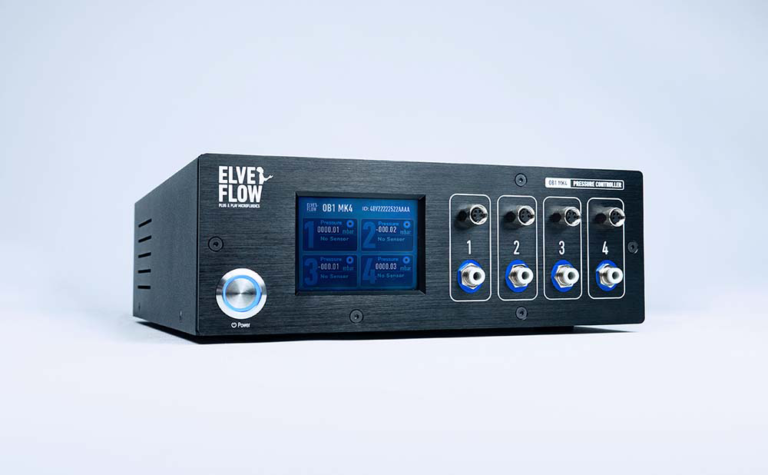
The Elveflow OB1 MK4 flow controller provides totally pulseless and fast-response flow control coupled with flow rate sensors with feedback loops. This is the most stable and precise microfluidic solution on the market, especially compared to syringe and peristaltic pumps.
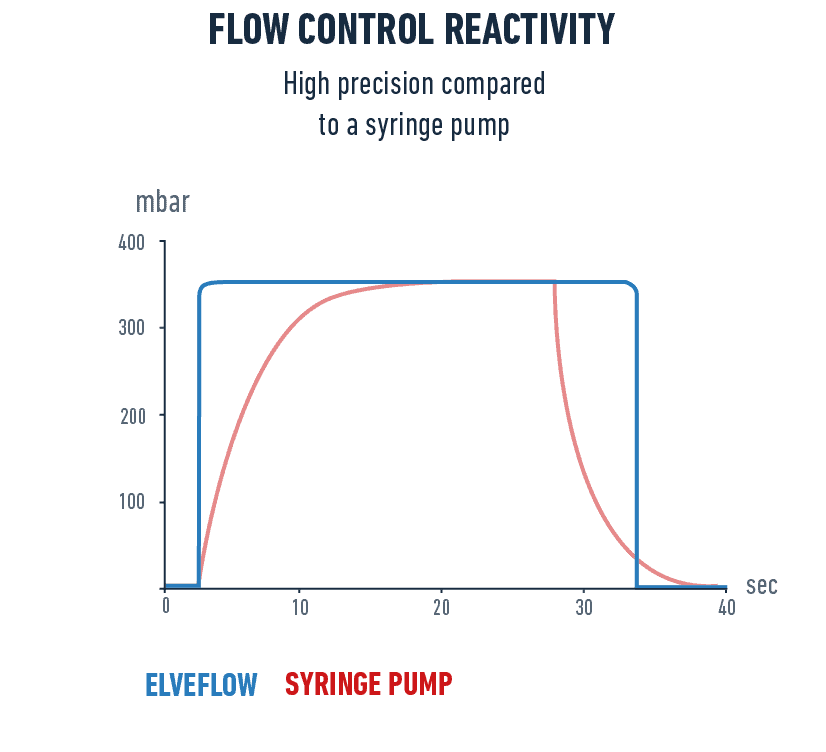
Customize your microfluidic BBB instrument pack
The fluidic 480 cross-flow membrane chip from microfluidic ChipShop comprises two in- and outlet ports above and below the membrane that allow molecule transfer. Different pore sizes, materials, and chip geometries with more inlets are also available.
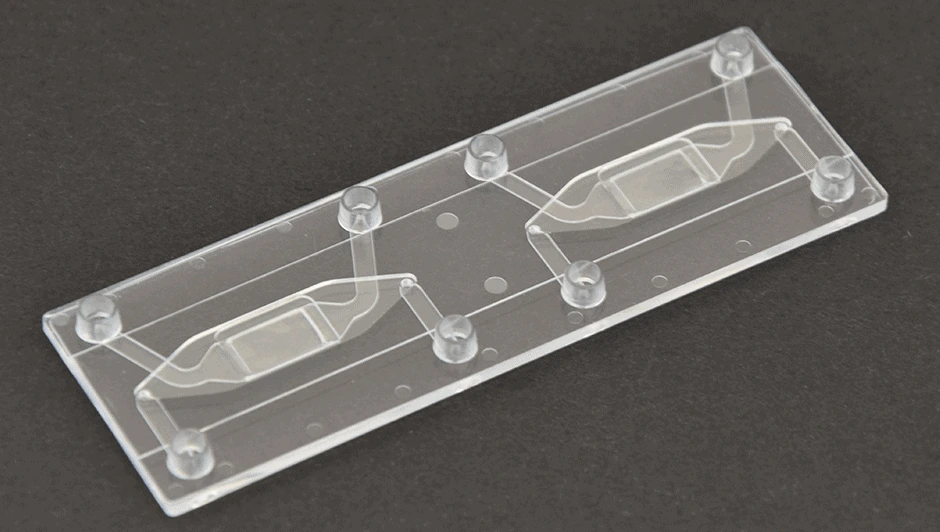
Our Packs are fully customizable to fit your needs perfectly. Our microfluidic specialists and researchers will help you choose the best instruments and accessories. They will accompany you during the setup of the microfluidic platform until you obtain your first experimental results.
We assembled other packs for organ-on-chips: the gut-on-a-chip and the endothelial cell culture packs.
Contact our experts for any questions about this BBB on a chip pack and how it can match your specifications!
– Check our other Packs for various applications –
Can the pack components be sterilized?
Yes, we have developed a simple protocol for cleaning and sterilizing the blood-brain barrier pack. It is provided with the user guide.
Can the pack be customized for my specific application?
Yes! The modular nature of the pack allows for fine-tuning to fulfill specific needs. A quick discussion with our team will help us define your best setup. Send us a message: innovation@microfluidic.fr!
Can I buy individual instruments?
You can order our instruments on the product section of our website.
Funding and Support
The Orgtherapy project results helped develop this pack; it has received funding from the French Agence Nationale de la Recherche (ANR) in the frame of ERA-NET JPco-fuND 2019.
![]()
